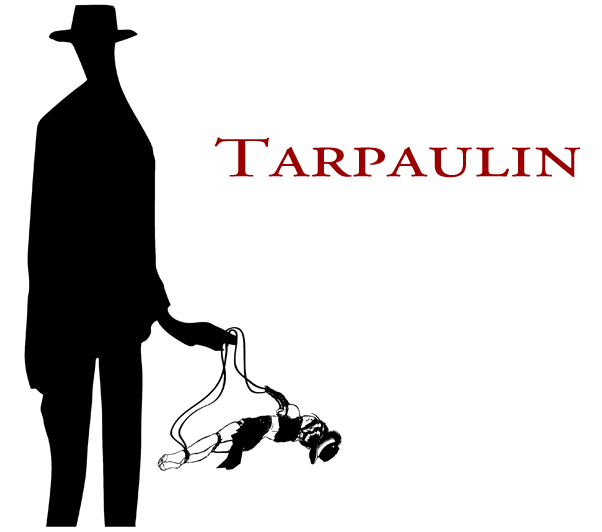 La Medusa
La MedusaVanessa Place
Fiction Collective 2 (2008)
ISBN-13: 978-1573661454
Paperback: 616 pages, $22
reviewed by Janice Lee
The Phenomenological Landscape of La Medusa (City as Monster/ City as Literature/ City as Consciousness)
In 1832, Louis Albert Necker described a "sudden and involuntary change in the apparent position of a crystal" during his observation, his perception having spontaneously shifted while the observed object stayed unchanged.
In 2008, Vanessa Place likened the epic narrative of the city of Los Angeles to "the modern mind that is both expansive and penetrating in its obsessions and perceptions."
What Necker's cube and La Medusa relate is the idea that the original presentation of reality itself is metaphorical, that what is seen is always inextricably bound up with how one sees. What Necker's cube offers as a metaphor for consciousness is also a metaphor for a difficult text, recalling the consequences of facing the creation of an impossible perceptual world occurring in a physical one. La Medusa takes on the impossible challenge: to write a book about the legendary city of Los Angeles, a city so de-centered that no book could possibly encompass its vastly different representations, no book could avoid the ephemerality of an attempt at a concretization of LA, no book could represent the gaze, tame the city as monster and insert it into the artificially rendered pages of a book. But this is why La Medusa can, and does, knowing that the city is something that is constantly becoming but never is.
Los Angeles is a city that is there and here, a city constantly remaking itself and artificially rendered as well, so that the various consciousnesses that make up Place’s epic novel are not meant to be definitive, rather artificial versions of artificial realities that have left some feelers behind in the "real world."
Vanessa Place's La Medusa is described as a "polyphonic novel of post-conceptual consciousness," yet this novel is more than just a return to a Joycean experience, as Michael Silverblatt comments, and it is more than just a theoretical description of the phenomenal properties of consciousness in narrative. Rather, the novel resists Daniel Dennet's famous claim that consciousness is simply a kind of illusion or epiphenomenon and provokes the reader into a consideration of the wages of consciousness and the agency we so fervently believe it comes along with—that is, consciousness is often taken for granted as innately tied to everyday perception but is something rather more artificial and flexible. Not only does the novel offer a literary enactment of the kind of consciousness that drives the dream of Los Angeles, the reader must construct her own phenomenological self-model during the process of reading.
Vanessa Place has written elsewhere, "Ergo no single story can be told because there is never just one." Yet there is an ontological paradox of quantum physics, as she continues, "for it is only the single observer who can create wholecloth reality from piecemeal particles—the singular consciousness in all its individual multiplicity transforms the multiplicity of the quantum flux." Place's own book is an ambitious architecture of human consciousness mapped over the vast landscape of a sprawling city. Yet, as the reader delves in and out of the minds of characters (a doctor, a trucker, an ice cream vendor, a corpse—to name a few), what they learn to see is not the world through another character's eyes, but to see the world differently through their own again. The reader's own process of narrativizing-as-reading becomes mapped onto the narrative architecture of the multimodal world of the page. The text is fragmented into bursts of language and emotion, for as Max Planck discovered, on the quantum level, energy works in bursts, not in a steady Joycean stream.
So how does this text operate, on a quantum level or on a greater one? How does it look to the history of literature, mending the broken bodies of texts, tattered from history and time? It is easier to repair a broken pump than it is to heal a broken metaphor, especially when we have forgotten the difference. La Medusa maps a sprawling metropolis and metaphor for an artificial consciousness, ultimately asking the reader to reconsider their own preconceptions of the way their own minds work. It is in the constellation of lack, built upon the intrusions and disruptions of an architectural narrative, that we as readers realize that none of us are really in complete control of our own perceptions. In reading a text where we must learn how to read again, where does the dream of Los Angeles lie? La Medusa echoes softly: We are in the dream, and yet the dream is inside us.
****
Janice Lee is interested in metaphors of consciousness and theoretical neuroscience. Her work can be found or is forthcoming in Big Toe Review, Zafusy, antennae, sidebrow, Action, Yes, Joyland, and Black Warrior Review. Her first book is KEROTAKIS (Dog Horn Press, 2009), a multidisciplinary exploration of cyborgs, brains, and the stakes of consciousness. She holds an MFA in Creative Writing from CalArts and currently lives in Los Angeles where she is a co-curator for the feminist reading series Mommy, Mommy!, co-editor of the online journal [out of nothing], and co-founder of the interdisciplinary arts organization Strophe.




